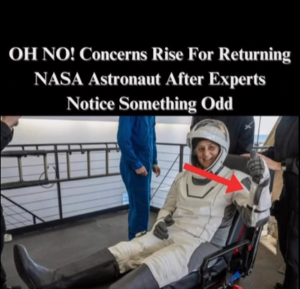After Spaceflight: Exploring Sunita Williams’ Health and the Unseen Impact of Microgravity
Sunita Williams, a seasoned astronaut and veteran of multiple space missions, has spent over 300 days in microgravity. While her achievements have inspired many, returning to Earth presents its own set of challenges—ones that are often unseen by the public. The effects of prolonged space travel on the human body are complex, and Williams, like many astronauts, has faced both immediate and long-term changes due to microgravity.
The Immediate Challenges of Returning to Earth
Upon re-entry, astronauts experience a range of physical challenges as their bodies readjust to Earth’s gravity. Williams has spoken openly about the disorienting effects of coming back home. Weakness, dizziness, and difficulty walking are common as muscles and bones struggle to regain their former strength.
One of the most immediate impacts is orthostatic intolerance, where astronauts struggle to stand upright due to shifts in blood flow. In space, the absence of gravity causes fluids to redistribute, often leading to facial puffiness and thinner legs. Once back on Earth, this sudden shift can cause dizziness and fainting.
Another major issue is bone density loss. Microgravity leads to significant calcium loss, putting astronauts at risk for osteoporosis-like conditions. Despite rigorous exercise regimens aboard the International Space Station (ISS), astronauts like Williams still experience some level of bone weakening.
The Hidden Long-Term Effects
While astronauts eventually regain strength, some effects of space travel linger for years. Williams and her colleagues have undergone extensive medical evaluations to monitor changes in their vision, cardiovascular system, and even genetics. One surprising discovery in space research is ocular changes, where astronauts develop swelling in the optic nerve, leading to vision problems. This condition, known as spaceflight-associated neuro-ocular syndrome (SANS), remains a concern for long-duration missions.
Additionally, prolonged exposure to cosmic radiation can increase the risk of developing cancer. Unlike Earth, where the atmosphere provides protection, astronauts are exposed to high-energy radiation, which can cause cellular mutations over time. Williams, like many others, continues to be monitored for potential long-term effects.
Psychological and Emotional Readjustment
Beyond physical health, astronauts must also navigate the emotional and psychological challenges of returning to life on Earth. After months of floating freely and seeing the vastness of space, the transition back to normal life can be jarring. Williams has spoken about the post-mission blues, a feeling of detachment as astronauts adjust to life back on solid ground. Many astronauts also experience sleep disturbances and altered circadian rhythms due to the disrupted light cycles aboard the ISS.
Looking Ahead: Space Travel and Human Adaptation
Sunita Williams’ experiences highlight the resilience of the human body and mind, but they also underscore the challenges that come with extended spaceflight. As humanity looks toward deeper space exploration—such as missions to Mars—understanding these effects will be crucial. Williams and her fellow astronauts are paving the way, not just for future space travelers, but for advancements in medicine and human adaptability beyond our home planet.
